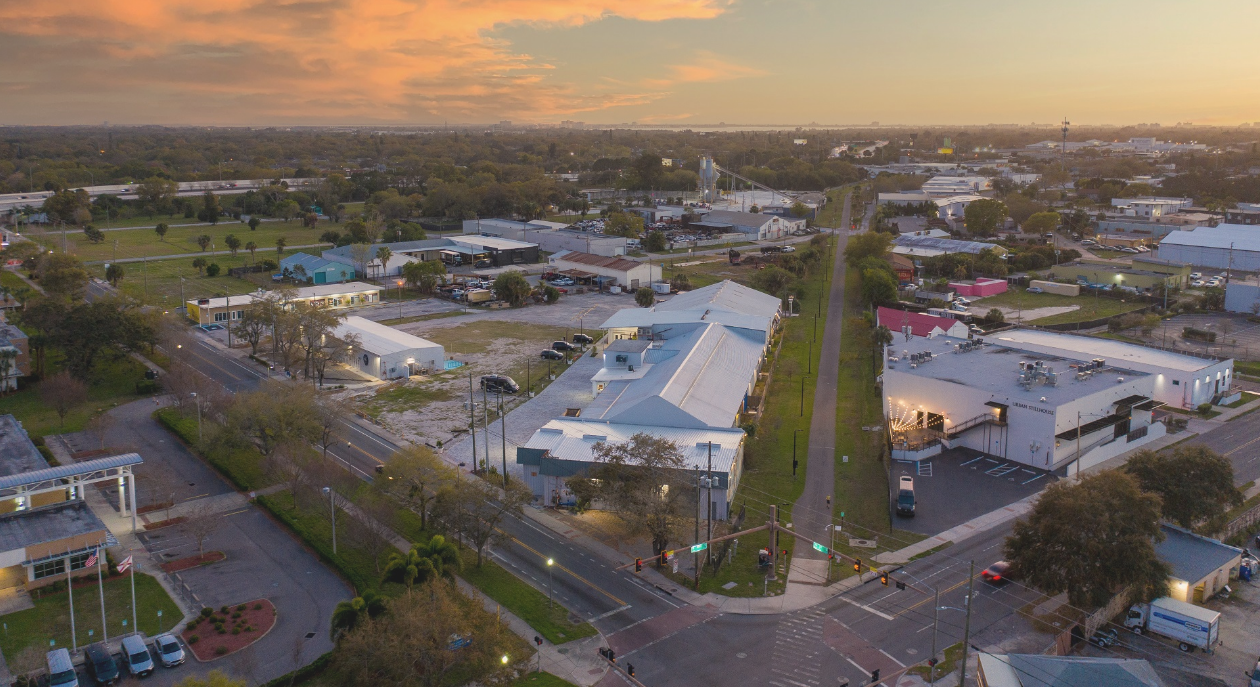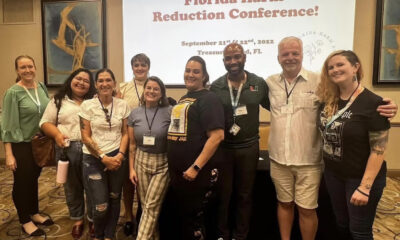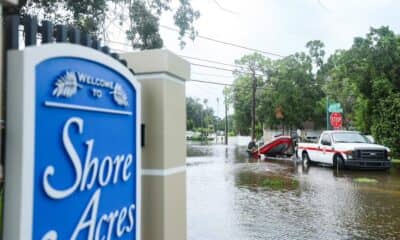Thrive
How WADA is working to retain creatives in the community

As the Sunshine City continues to promote itself as an artistic haven, with its mecca of museums and vibrant murals scattered throughout the downtown core, the escalating cost of living is forcing local artists to find housing far away from the bustling creative scene.
The growing number of luxury residential towers sprouting from corner lots, further exacerbating housing prices, and lack of affordable housing are issues that Warehouse Arts District Association Board President Mark Aeling and Director Markus Gottschlich want to confront through collaboration.

WADA board president Mark Aeling.
“The vibrancy of the creative community that has made St. Petersburg the destination that it is, is born out of the strength of the artists and supporting organizations,” Aeling said during an interview at the ArtsXchange campus, where WADA’s office is based. “The problem we are facing is we don’t have the live-work spaces for artists to live in the city and show their work.”
The ideal solution to address needed housing: Create multi-story, live-work complexes with ground-floor studio space and a combination of sleeping and living quarters for the artists.
“When we started WADA [in 2012], our initial focus was on studios. The costs associated with redevelopment for residential was very high, and as a young organization, we felt that we wouldn’t be able to pull it off,” he said.
WADA is a nearly 300-member-based organization founded by artists vying to transform the commercial district into an arts destination. Today, warehouses-turned-artist studios makeup the district where breweries also thrive, but there’s little to no affordable housing – leaving the artists to scout outside WADA boundaries for a residence.
Last year, Tampa-based Sight Real Estate announced it was developing Canvas City Homes St. Petersburg, a 10-unit residential development at 2700 5th Ave. South, in the district. The unit prices start at $525,000 – attracting high-income buyers.
“The reality is artists are having a very hard time affording this community,” Aeling said.
On average, Florida artists earn an annual salary of $47,250, according to the U.S. Bureau of Labor Statistics.
The WADA executives said the live-work concept may come to fruition as the group owns the five acres of developable land.

The ArtsXchange campus.
“We have been aggressive to get as much property as possible,” Aeling said.
In 2018, WADA opened the ArtsXChange at 515 22nd St. S.; it features 28 affordable working studios, over 2,500 square feet of gallery space, event space and a dance studio.
However, there are two other parcels WADA owns that could potentially be redeveloped, including what’s referred to as “The Shops at ArtsXchange,” commercial and studio storefronts directly behind the main campus.
When WADA purchased the site several years ago, the team honored the existing leases that are far below market value, according to Aeling.
WADA also owns a triangular piece of undeveloped land along 23rd Street along the Pinellas Trail.

The triangular WADA-owned property.
“The development of live-work spaces for this site could take years to happen. We have multiple options and could use the triangular property for overflow parking and creating opportunities in the meantime [including additional parking for ArtWalk],” Aeling said.

The ArtWalk event at the ArtsXchange campus.
A blank canvas and a missing painter
Although WADA is pursuing changes to the properties, the group is constrained by a tight budget.
“These projects will cost millions of dollars. We are trying to enter a partnership where we aren’t beholden to a developer, and can keep the rents low,” Aeling said. “We need to do a large portion of this with grants and donations to do the bulk of the campus – that’s why we have subsidized studios. It’s all about sustainability, and the way to do that is to keep ROI [return on investment] down.”
WADA has a history of working with the city and state on projects. When the group purchased the ArtsXchange site in 2015, it received grants from the city and state, but WADA had to finance a small amount of the project as the organization didn’t raise enough funds by a certain deadline.
“Right now, we are just trying to create a white page for the buildout and rents,” Aeling said.
“When we first started this project idea, one of our board members, who had a development background, said what we need to do is take these warehouse buildings and tear them down,” Aeling recalled. “It would be less expensive than adapting them for another use, particularly residential because those code requirements are much more expensive – and that’s also why we initially did workspaces.
“We didn’t want to demolish the structures. There’s a uniqueness to developing a building. It creates interesting aspects that add the culture and experience.”
One of the key components that will move the needle for the live-work WADA effort will be new zoning.
Developer Joe Furst, founder of Miami-based developer Place Projects, is advocating for an industrial mixed-use rezoning initiative dubbed I-Mix. The I-Mix zoning could transform perpetually vacant land along the 22nd Street corridor in St. Petersburg into a thriving, walkable neighborhood.
Furst is a stakeholder in the community. He owns seven acres of underutilized land between 3rd and 5th Avenues, along 22nd Street, adjacent to 3 Daughters Brewing and the Morean Center for Clay.
The proposed I-Mix designation would promote industrial operations in the district while creating opportunities for much-needed housing and retail.
WADA execs said they expect to receive an answer by the end of the year if the I-Mix zoning moves forward.
Aeling said the newly passed Neighborhood Traditional Mixed Residential (NTM-1) zoning will also help address housing need as it allows density increases on nearly 3,000 properties.
The NTM zoning rules apply to properties within 175 feet of “future major streets” and currently high-trafficked roads. Eligible homeowners can build or create up to four units in areas traditionally reserved for single-family homes.








Steven H
August 9, 2023at8:40 am
Great article, but it’s important to point out one error, and that is that adding luxury condos does not increase the cost of housing in other parts of the city. In fact, it actually prevents housing costs from rising. Those wealthy buyers will gladly come gentrify your neighborhood if they don’t have these to purchase. Supply and demand is chapter one of any high school economics textbook and it is applicable to housing, no matter what your politics are. There are plenty of real world examples proving that places that restrict housing development make housing affordability worse.
Georgia Earp
August 7, 2023at5:32 pm
Good news!